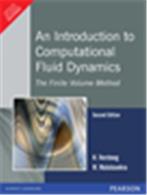An Introduction to Computational Fluid Dynamics: The Finite Volume Method, 2/e

|
Author(s):
Author:
H. Versteeg
- ISBN:9788131720486
- 10 Digit ISBN:8131720489
-
Price:Rs. 1410.00
- Pages:518
- Imprint:Pearson Education
- Binding:Paperback
- Status:Available
-
|
This established, leading textbook, is suitable for courses in CFD. The new edition covers new techniques and methods, as well as considerable expansion of the advanced topics and applications (from one to four chapters).
This book presents the fundamentals of computational fluid mechanics for the novice user. It provides a thorough yet user-friendly introduction to the governing equations and boundary conditions of viscous fluid flows, turbulence and its modelling, and the finite volume method of solving flow problems on computers.
Table of Content
- Introduction
- Conservation laws of fluid motion and their boundary conditions
- Turbulence and its modeling
- The finite volume method for diffusion problems
- The finite volume method for convection-diffusion problems
- Solution algorithms for pressure-velocity coupling in steady flows
- Solution of systems of discretised equations
- The finite volume method for unsteady flows
- Implementation of boundary conditions
- Uncertainty in CFD modeling
- Methods for dealing with complex geometries
- CFD modelling of combustion
- Numerical calculation of radiative heat transfer
|
Salient Features
- Presents a broad introduction to fluid and turbulence physics and computational modelling techniques.
- Incorporates an advanced applications section.
- Uses easy-to-programme computer algorithms for the PC.
- Includes a substantial review of the latest turbulence modelling techniques.
- Features the predominant commercial CFD codes: PHEONICS, FLUENT, FLOW3D and STARCD.
- SI units used throughout.
|
|
|
|
|